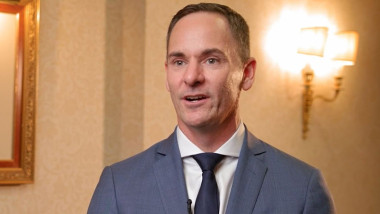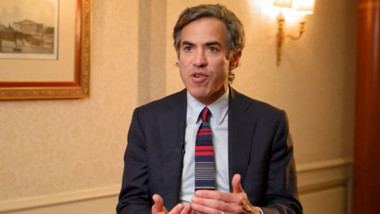Views from the Collective: Where Next for Sustainable Investing?
Despite its growing popularity, challenges remain and there is a genuine threat that investors lose heart amid growing signs of greenwashing, complicated regulatory upgrades, and less than stellar returns. As the market and motivations continue to mature, should investors be more optimistic for the future of sustainable investing?
“Sustainability is now mainstream and that is totally new,” said Lea Dunand-Chatelet, portfolio manager and head of responsible investment at Paris-based DNCA Investments. “What is going to be the challenge is graduation.”
Lea was speaking at a sustainable investing panel during the recent Natixis Thought Leadership Summit in Paris, where she explained how the challenge was now moving beyond simply introducing – and justifying – the concept of sustainable investment.
Instead, the conversation is becoming more sophisticated. Lea continued: “The reality is you have different types of investments and you have to compete with that – you can have products that do not have any ESG integration, and then those that make a real impact. There is a wide space between these.”
This is evident in the way ESG is being interpreted, and integrated, differently throughout the asset management industry. It has also coincided with a broader range of issues coming to prominence which fellow panellist, Karen Kharmandarian, CIO at Thematics Asset Management, believes adds another layer of complexity for investors.
“We have a broader scope of issues that are targeted in the environmental space and on the social side we are also seeing that evolution as well,” said Karen. “The goalposts are always moving, and rapidly moving. The most important thing is we do not lose sight of the duty to our clients.”
Speaking at another panel discussion on equities during the event, Soliane Varlet, SRI equity portfolio manager at Mirova, discussed how her team was using these issues to identify financial outperformers. Specifically, Soliane explained how gender diversity could dictate equity research and stock selection for portfolios.
“The fact is companies with a more diverse team tend to be much more economically profitable,” she said. “To identify the company as a gender diversity champion, we focus first on top management because there is a sphere of effect. A woman CEO is more likely to have women running business units.”
Noise cancellation
Although sustainable investing may no longer be a niche endeavour, existing and fresh challenges abound – not least the introduction of new, and continuously updated, regulations. This may come at a significant cost for firms.
Of course, recognising shifting long-term trends is one thing. Being able to accurately quantify them and report on them is quite another. As Lea pointed out, where sustainability issues and data was once a problem of scarcity, ESG’s rise in popularity has flipped the issue on its head and investors now have to anticipate an abundance of concerns.
She explained: “20 years ago, less than one company in 10 in Europe was delivering 10 pages about sustainable development in their annual reports. Now, most of the pages are linked to this. This is too much.”
The profusion of sustainability collateral means there’s a challenge in simply sifting through the noise, rather than pressuring companies to publicise anything. Lea added: “We need figures and raw data. Trust of the data will be key in the next few years. Standardisation is the first step and regulation is starting to give us that.”
Despite these obstacles, the panellists agreed that the extra work was worth it. The signs of long-term change are inevitable and most want their portfolios aligned with the future, so they can benefit from the transitions.
Soliane concluded: “We want to allocate capital towards companies that will finance the environmental and social transition. The ESG metrics are key to assessing sustainable opportunities, but also to better understanding the risks for a company.”
DNCA, Thematics and Mirova are all affiliates of Natixis Investment Managers, and form part of our Expert Collective.
GLOSSARY
- Energy transition – the transformation of the global energy sector from fossil-based systems of energy production and consumption to renewable energy sources. Switching from non-renewable energy sources like oil, natural gas, and coal to renewable energy, such as wind or solar, is made possible by technological advancements and a societal push toward sustainability.
- ESG – (environmental, social, governance) is widely used in the investment industry to describe three types of non-financial factors that may affect the financial performance of a company or a security:
- Environmental may include factors related to renewable energy, lower carbon emissions, water management, pollution control and other ecological concerns.
- Social considerations may relate to labour practices, human rights, corporate social responsibility, data protection, selling practices or corporate supply chains.
- Governance issues can include the composition of boards of directors, corruption policies, auditing structure, executive pay or shareholder rights.
- ESG integration – refers to strategies that integrate ESG factors into fundamental analysis to pursue alpha and manage risk, or may use sustainable themes to identify investment opportunities. Certain ESG strategies may also seek to exclude specific types of investments.
- EU Taxonomy – is a classification system, establishing a list of environmentally sustainable economic activities. The taxonomy provides companies, investors, and policymakers with appropriate definitions for which economic activities can be considered environmentally sustainable.







 All back to bonds?
All back to bonds?